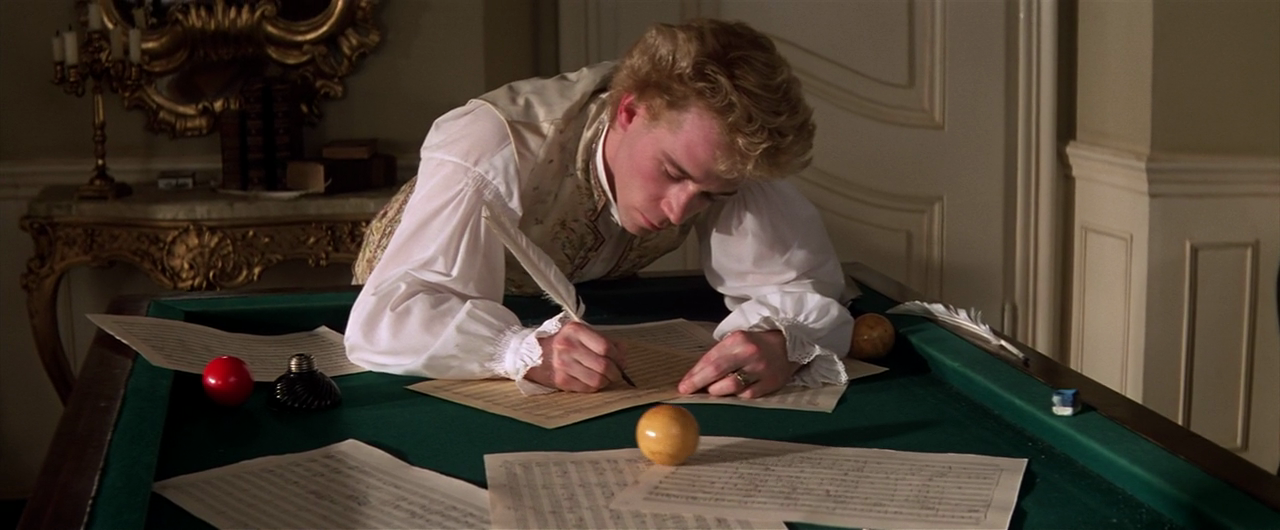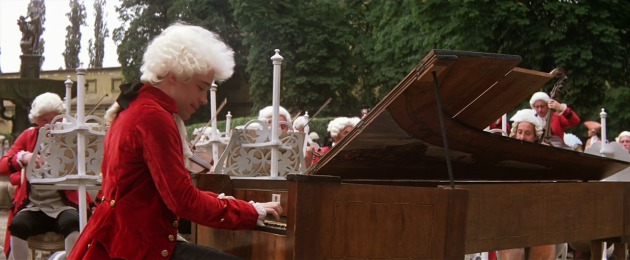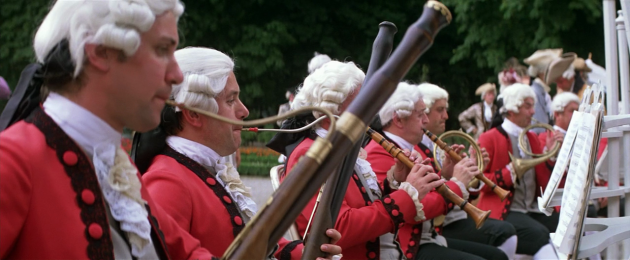Next up are the piano concertos. The standard of writing in this phenomenal body of work is so consistently high that it’s hard to narrow things down. However, the most important concertos are those composed in Vienna in the mid-1780s – the 14th up to the 25th. Of these, it is the 20th and 21st which are amongst the most well-regarded, and one of the best points to begin exploring Mozart’s vast piano corpus. Here’s the 21st, with its march-like opening:
Piano Concerto No. 21, 1st movement, Allegro, part 1
Piano Concerto No. 21, 1st movement, Allegro, part 2
The stately (and incredibly famous) slow movement:
Piano Concerto No. 21, 2nd movement, Andante:
And the giddy call-and-response finale:
Piano Concerto No. 21, 3rd movement, Allegro vivace:
Here’s the 20th concerto, with its explosive and sinister first movement, prefiguring later Romantic efforts. This concerto was a particular favourite of Beethoven’s, and he even wrote his own added solo parts for it:
Piano Concerto No. 20, 1st movement, Allegro, part 1:
Piano Concerto No. 20, 1st movement, Allegro, part 2:
This is followed by the childlike simplicity of the second movement, which is almost impossible to listen to without thinking of that famous Amadeus laugh:
Piano Concerto No. 20, 2nd movement, Romance:
And in a classic example of the kind of multiplicity which Philip Glass has pointed out in Mozart’s work, the last movement is different again, providing a slightly jerky, uneasy finish to this masterpiece:
Piano Concerto No. 20, 3rd movement, Rondo allegro:
I could happily ramble on for quite some time about these concertos, but instead of doing that, I’ll just give you a few more of my favourite finales and leave you to investigate further:
Number 23:
Number 27:
Number 10:
Number 15:
Number 17:
Number 9:
Number 22:
Number 19:
One of the other most popular works in this format is the sublime double concerto for flute and harp, with its soaring slow movement and breezy finale. Incredibly, Mozart’s aristocratic patron never delivered payment for the work:
Concerto for Flute and Harp – 1st Movement, Allegro
Concerto for Flute and Harp – 2nd Movement, Andantino
Concerto for Flute and Harp – 3rd Movement, Rondo Allegro
By far the best of Mozart’s five violin concertos is the 3rd (although the fifth is also brilliant) featuring an insistent opening theme, lilting middle section and a witty ending:
Violin Concerto No. 3, 1st movement, Allegro
Violin Concerto No. 3, 2nd movement, Adagio
Violin Concerto No. 3, 3rd movement, Rondo Allegro
And no account of Mozart’s concertos would be truly complete without the delightfully silly rondo from the fourth horn concerto, which takes inspiration from the sounds of the hunt, a theme which musicians have explored again and again and again and again (and again):
Horn Concerto No.4, 3rd movement, Rondo
Now that the concertos are out of the way, we can finally move on to the symphonies. Again, there’s a huge amount of material here, but the very best are the pair composed towards the end of Mozart’s life, numbers 40 and 41, plus the 25th. Symphonies as written by Haydn and Mozart are rather different animals from those of Beethoven and later composers, not least because they are much shorter. However, I won’t dwell on their stylistic differences, as listening to the music tells you everything you need to know.
The 41st symphony is remarkable for its abundance of contrasting majestic and lyrical themes which repeatedly mutate in unexpected ways, as well as its return to the kind of complex fugal writing which also characterised Beethoven’s last works, as both composers had studied Bach as children, and under the influence of the baroque fanatic Baron van Swieten. Occasional moments of high drama reveal the cracks in the facade of classical restraint, while the remarkable interwoven motifs almost threaten to collapse into one another. This work sees Mozart reaching new technical heights, throwing down the gauntlet for future symphonists:
Symphony No. 41 – 1st movement, Allegro vivace:
Symphony No. 41 – 2nd movement, Andante cantabile:
Symphony No. 41 – 3rd movement, Menuetto allegretto:
Symphony No. 41 – 4th movement, Molto Allegro:
Here are some highlights from the famous 40th symphony and perhaps the most dramatic and evocative of all Mozart’s orchestral works, the 25th, which in my mind always goes together with the 20th piano concerto, which shares its moody, minor-key atmosphere:
Symphony No. 40, 1st movement, Molto allegro:
Symphony No. 25, 1st movement, Allegro con brio:
Honourable mentions should also go to symphonies 39, 38 “Prague,” 36 “Linz,” 35 “Haffner,” and 29, amongst others:
Symphony No. 39, 4th movement:
Symphony No. 38, 3rd movement:
Symphony No. 35, 1st movement:
Symphony No. 35, 4th movement:
Symphony No. 34, 4th Movement:
Symphony No. 33, 4th Movement:
Symphony No. 29, 1st movement:



